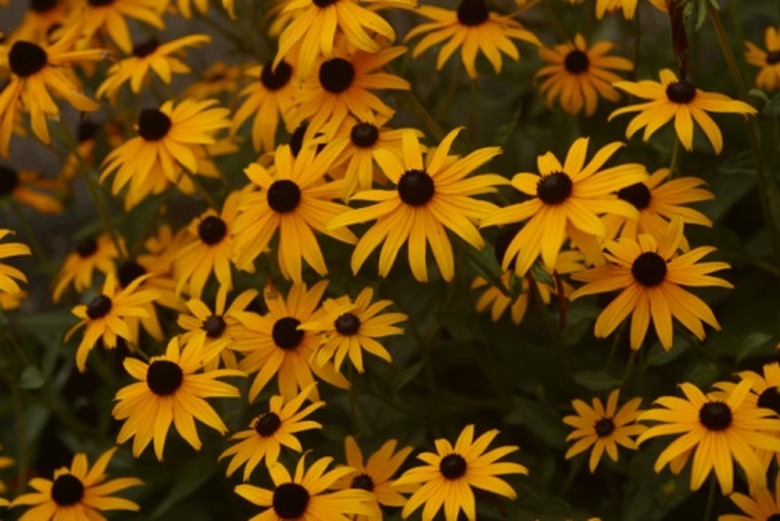How To Cut Back Black-Eyed Susans
Black-eyed Susans (Rudbeckia) add a dramatic swash of color to summer garden beds, borders and planters. Most varieties have bright yellow blossoms, but red and purple varieties are also available. The upturned flowers have a central black seed cone that earns the plants their name. Seed production prevents the plants from producing a second set of blooms later in the season. Cutting back the black-eyed Susans can reward you with blooms throughout the growing season.
Step 1
Trim back the flower stems in summer after the blossoms begin to wilt. Cut the stems off ¼ inch above the topmost leaf. Plants that are cut back may flower a second time in the fall.
- Black-eyed Susans (Rudbeckia) add a dramatic swash of color to summer garden beds, borders and planters.
- Trim back the flower stems in summer after the blossoms begin to wilt.
Step 2
Cut back the the entire black-eyed Susan plant after the first fall frost kills off any remaining flowers. Prune the stems down to just above the top healthy leaves. Cut off any dead or browned leaves.
Step 3
Spread a 2- to 4-inch layer of mulch over the black-eyed Susan bed once the ground begins to freeze, typically after three to four fall frosts have occurred. Mulch protects the crown of the trimmed flowers and helps them survive winter.
Cut A Black-eyed Susan All The Way Back To The Root?
When you cut back a black-eyed Susan, do not cut the plant stems at or below the soil level, but instead use pruning shears, scissors or a knife to sever the stems about 2 inches above ground level. In fall, you can cut this perennial back to 2 inches above the soil line if the plant is diseased or you consider the dead stems unattractive.
- Cut back the the entire black-eyed Susan plant after the first fall frost kills off any remaining flowers.
- In fall, you can cut this perennial back to 2 inches above the soil line if the plant is diseased or you consider the dead stems unattractive.
Things Needed
- Shears
- Mulch
Warning
Dispose of all trimmed plant material. Leaving dead plant matter in the bed can attract insect pests or disease organisms to the garden.
Tip
Black-eyed Susans have attractive seed heads that provide food for overwintering birds. To make the seed heads available for the birds, leave the old flowers in place until late winter.
References
- University of Illinois Extension; Day Lilies and Black-Eyed Susans; Greg Stack
- University of Florida IFAS Extension: Rudbeckia Hirta
- North Carolina Cooperative Extension Service: Rudbeckia Fulgida
- University of Minnesota Sustainable Urban Landscape Information Series: Pruning Perennials
- The Old Farmer's Almanac: Black-eyed Susans
